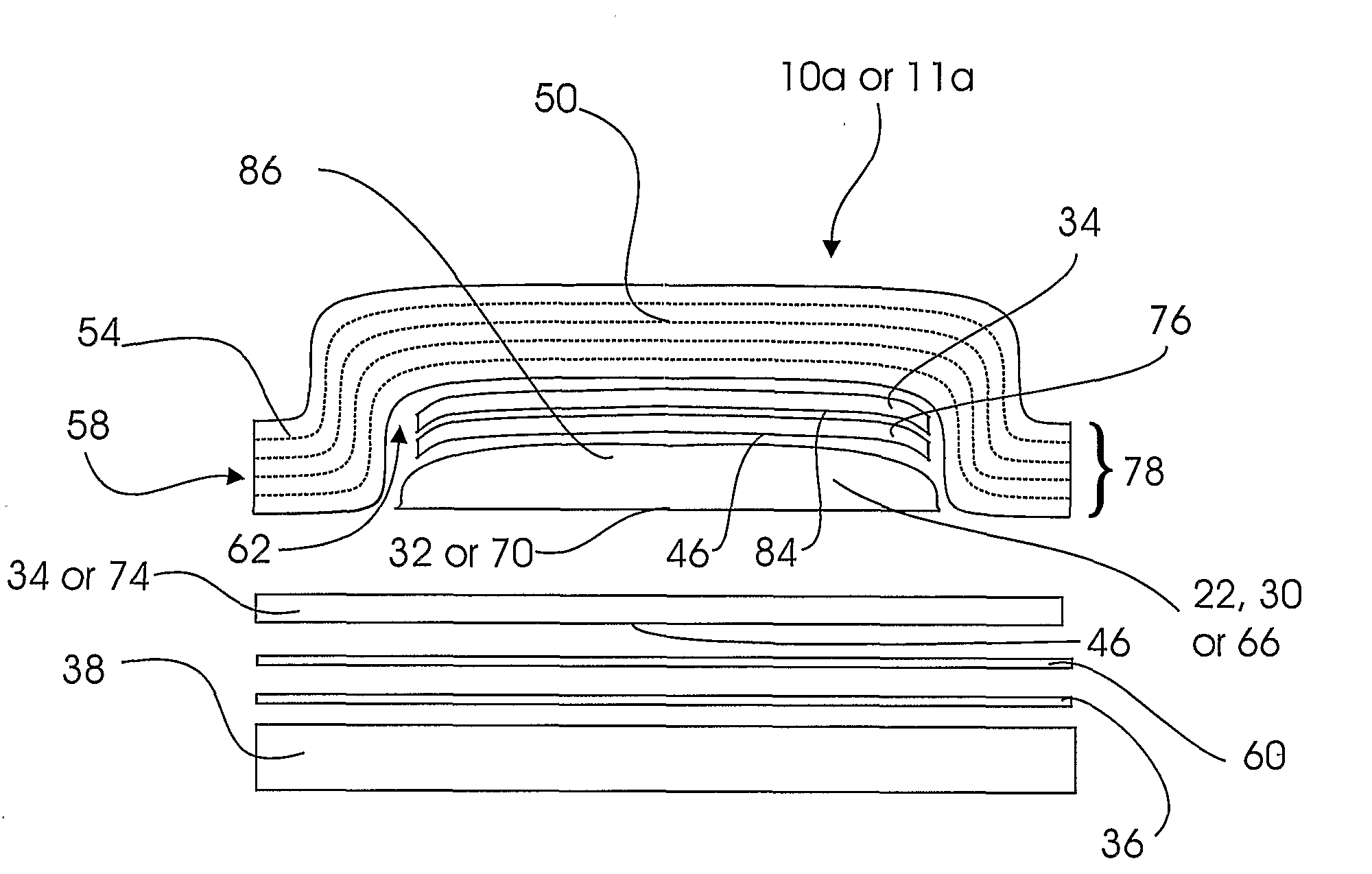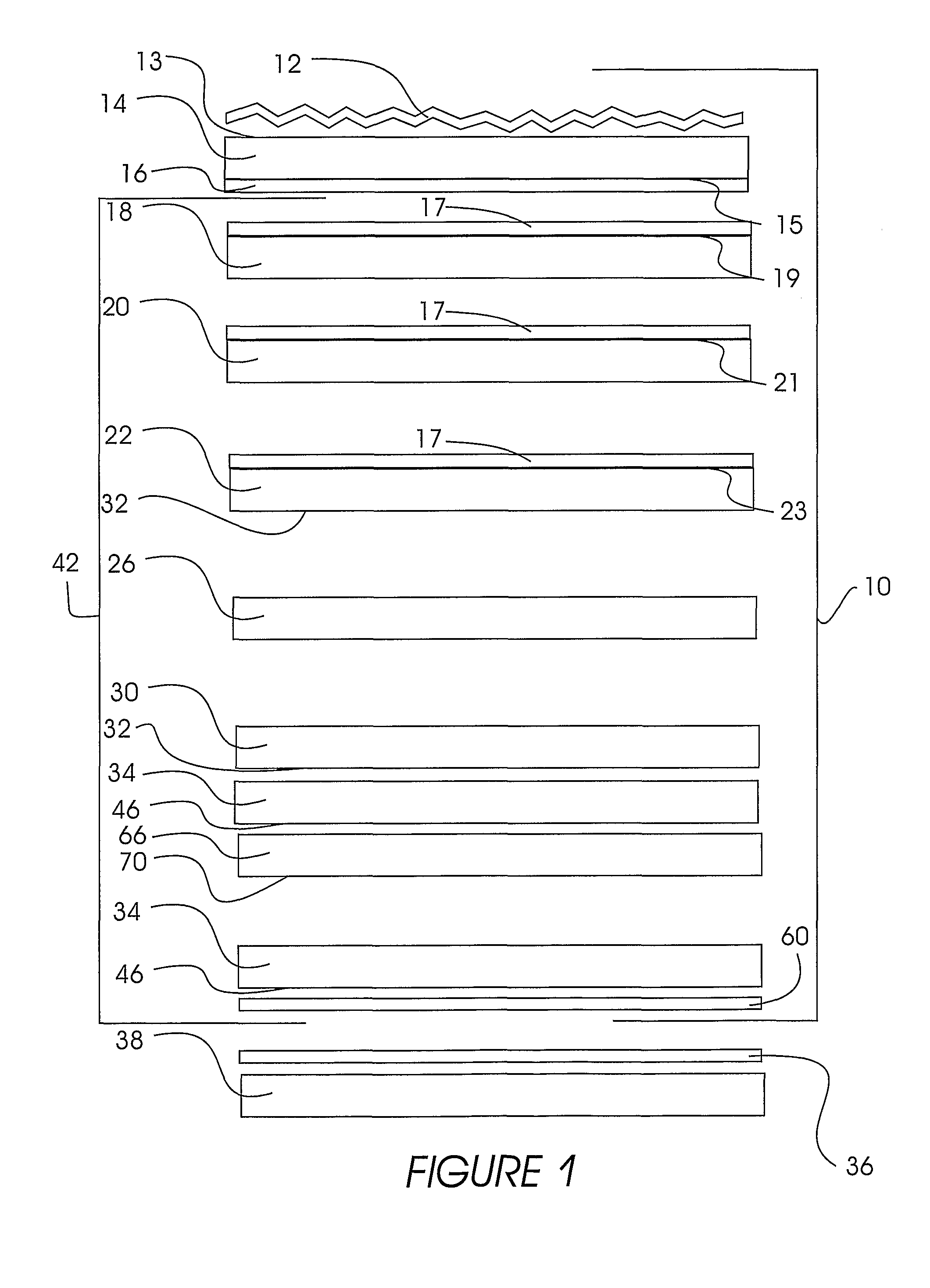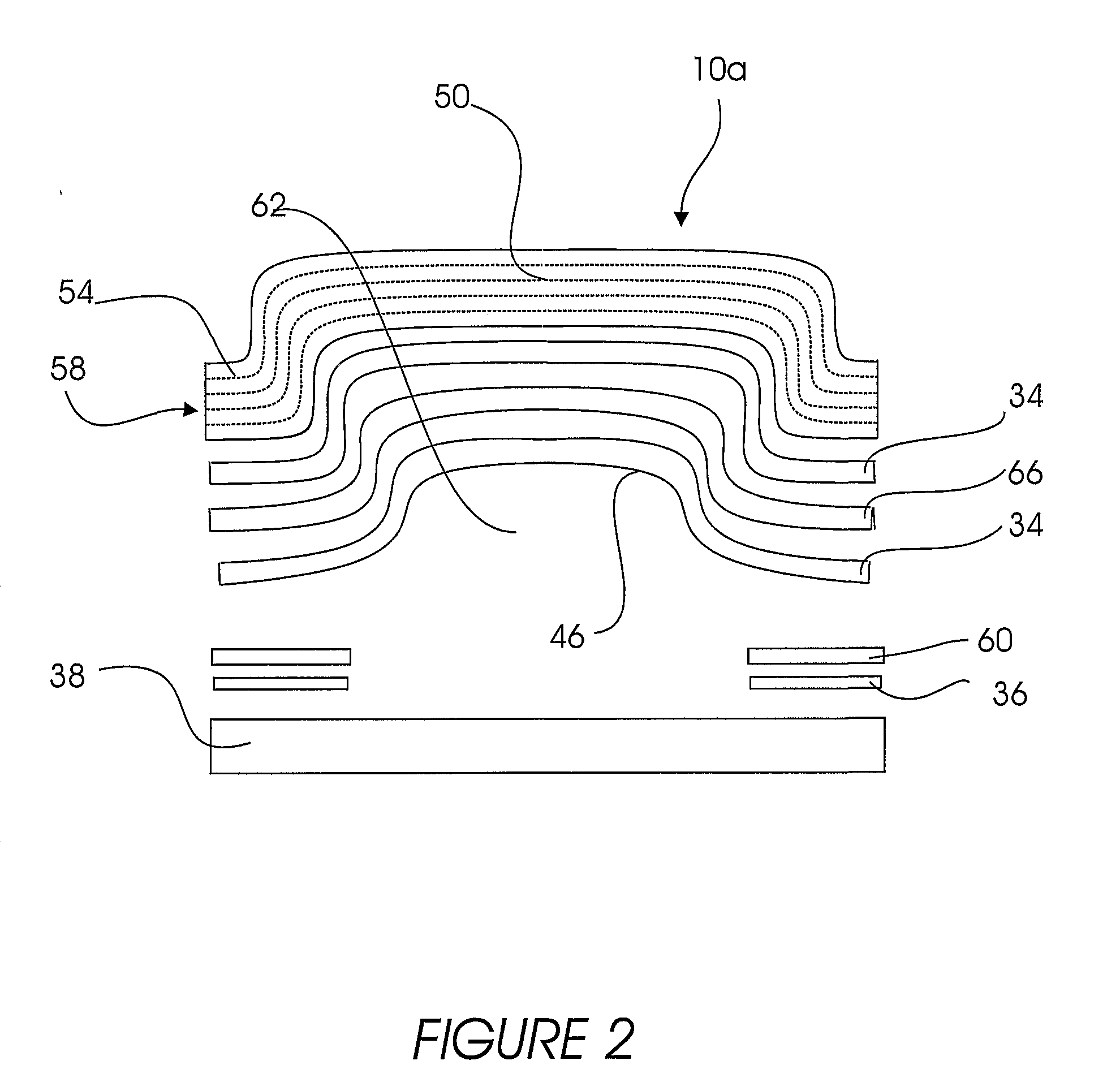Composition of a weatherable roofing composite product
a composite product and weather-resistant technology, applied in the field of roof materials, can solve the problems of falling through the roof, requiring a substantial amount of labor in installation, and prone to breakage on impact,
- Summary
- Abstract
- Description
- Claims
- Application Information
AI Technical Summary
Benefits of technology
Problems solved by technology
Method used
Image
Examples
example
[0215]Thickness: Plastic roofing products were fabricated in accordance with the above description. The top layer 14 of the weatherable polymer compound was from 0.002 to 0.015 in. thick and the layer 22 of semi-weatherable polymer compound was from 0.010 to 0.125 in. thick before thermoforming. Based on the current design of the plastic roofing product it is estimated that the desirable thickness of the product should between 0.045″ and 0.090″ in roll applications and between 0.045″ and 0.125″ in thermoformed applications.
[0216]Size: The thermoformed plastic roofing product sizes experimented with range from Vi′—1.5″ thick by 12″-36″ by 36″-60″. The rolls measure 40″-120″ by 100 ft to 600 ft.
[0217]Weight: Dependent upon thickness ranges from 25 pounds to 120 pounds approximately per 100 square feet. This product is one of the lightest weight roofing materials available.
[0218]The present invention 10, 10a, 11, 11a can be attached to the sheeting over the framing of a roof or to the ...
PUM
| Property | Measurement | Unit |
|---|---|---|
| Temperature | aaaaa | aaaaa |
| Temperature | aaaaa | aaaaa |
| Temperature | aaaaa | aaaaa |
Abstract
Description
Claims
Application Information
 Login to View More
Login to View More - R&D
- Intellectual Property
- Life Sciences
- Materials
- Tech Scout
- Unparalleled Data Quality
- Higher Quality Content
- 60% Fewer Hallucinations
Browse by: Latest US Patents, China's latest patents, Technical Efficacy Thesaurus, Application Domain, Technology Topic, Popular Technical Reports.
© 2025 PatSnap. All rights reserved.Legal|Privacy policy|Modern Slavery Act Transparency Statement|Sitemap|About US| Contact US: help@patsnap.com



